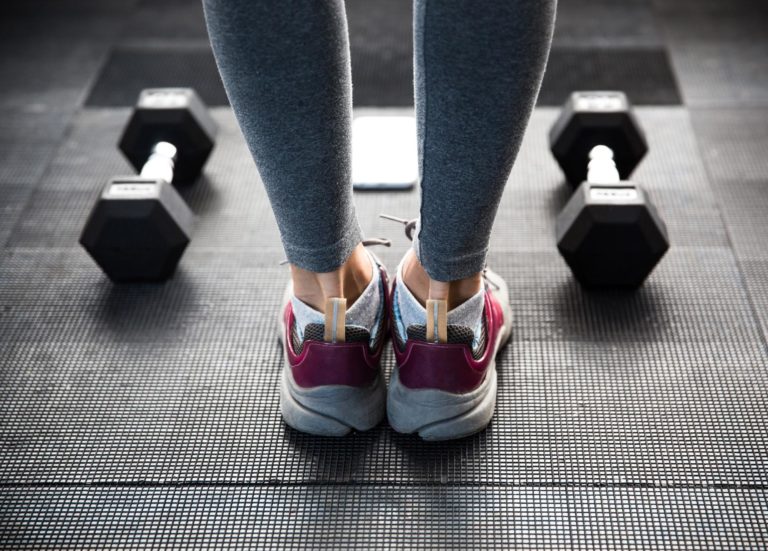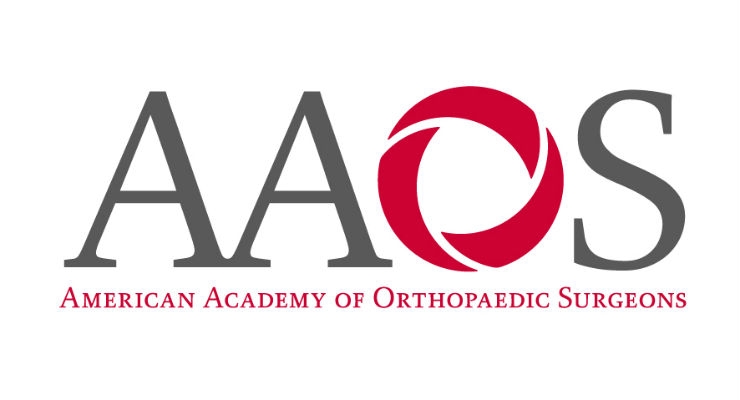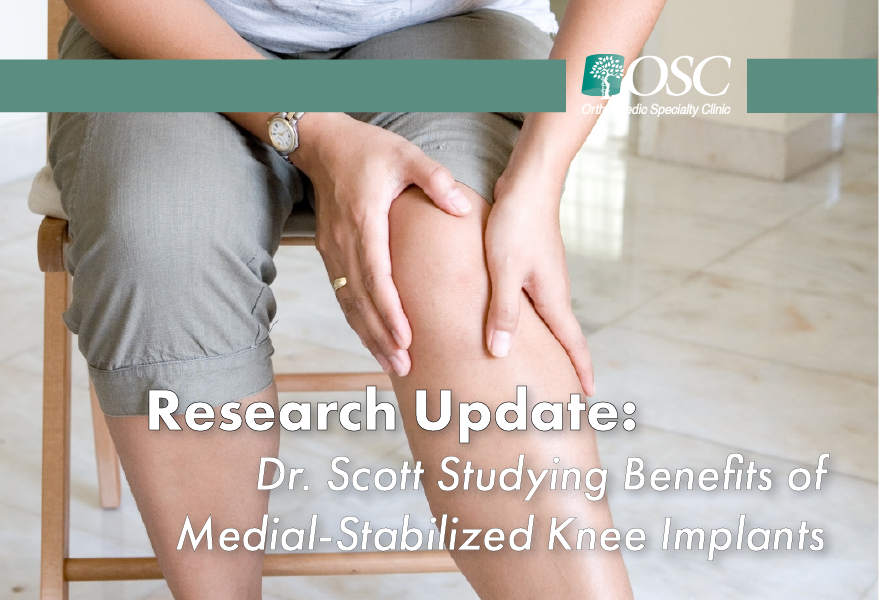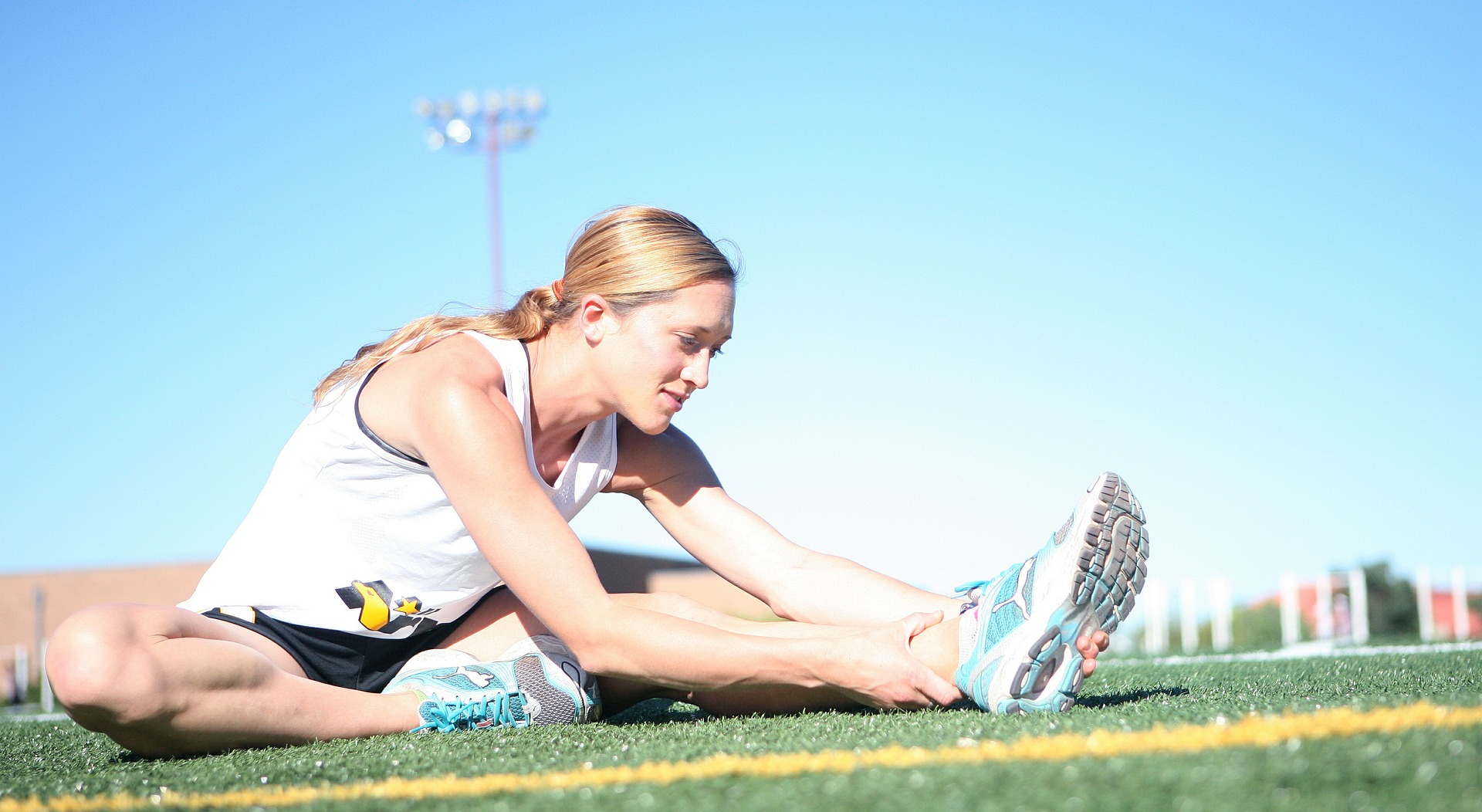
An important aspect of recovery after joint replacement is regaining strength in the surrounding muscles. Muscle strength is often lost after injury, and must be rebuilt gradually after surgery. Here are some of the tools we use at OSC to achieve this.
Free Weights
Free weights—like dumbbells, barbells, and kettlebells—are great for rebuilding strength, and especially strengthening joint stabilizer muscles, because of the need for more balance and coordination when using them. They also allow for more variation in range of motion and better mimic functional movement in day to day activities.
Leg Press with Shuttle MVP
This piece of equipment is a three-in-one machine: It’s a supine (lying on your back) leg press, a less than body weight plyometric machine, and an early stage rehab tool. In the supine position, this machine provides full extension resistance training with minimized joint impact. As a plyometric tool, it allows for jumping and explosive movement in a controlled and less than body weight environment. Resistance can be ramped from very low to more challenging as recovery progresses.
BTE Eccentron for Lower Extremity Eccentric Training
The Eccentron utilizes eccentric resistance training (muscle contraction while lengthening, like the down motion of a bicep curl or pull-up) along with advanced measures and tracking. The Eccentron is most commonly used for total knee replacement, ACL and hip rehabilitation. We started with a prototype of the machine 12 years ago and helped BTE with design and clinical feedback. Learn more about this tool here.
Quantum Hip Machine
This machine is used for hip rehabilitation by strengthening the surrounding muscles through abduction, adduction, flexion, and extension.
NK Knee Extension and Hamstring Station
This is a machine for strengthening the muscles surrounding the knee, while also working on range of motion.
Tuff Stuff AXT-1 Exercise Machine with Bench Seat
This is a multi-purpose machine with a cable pulley system and pull-up bar that allows for many different configurations and ways to target different muscle groups.
Plyometric Station
Plyometrics is a form of exercise that combines coordination, strength, and speed. Also known as “jump training” plyometrics are exercises in which muscles exert maximum force in short intervals of time with the goal of increasing power. Incorporating plyometric training into the rehabilitation process especially helps those who wish to return to activities that involve loading-coupling-unloading movements such as jumping, throwing, or swinging a club, racket, or bat.
Balance and Stability Training
In addition to strength training, balance and stability are also important components for the recovery process. Not only does balance and stability exercise strengthen core muscles, an important part in any rehabilitation or fitness regimen, but is also focuses in on stabilizer muscles, which help in the recovery of normal joint movement and range of motion. Tools like Bosu Balls, physioballs, plyo-balls, rockerboards, and stability discs challenge balance, and through the natural impulse of the body to try and regain that balance, strengthens surrounding muscles and tissues. These balance tools can be used on their own, or in conjunction with other means of resistance, such as free weights, for added challenge.
OSC also uses a Biodex Balance System Machine to test balance to see where improvements can be made and track progress.
These are just a few of the tools used by the on-site therapy team at OSC. Learn more here.





